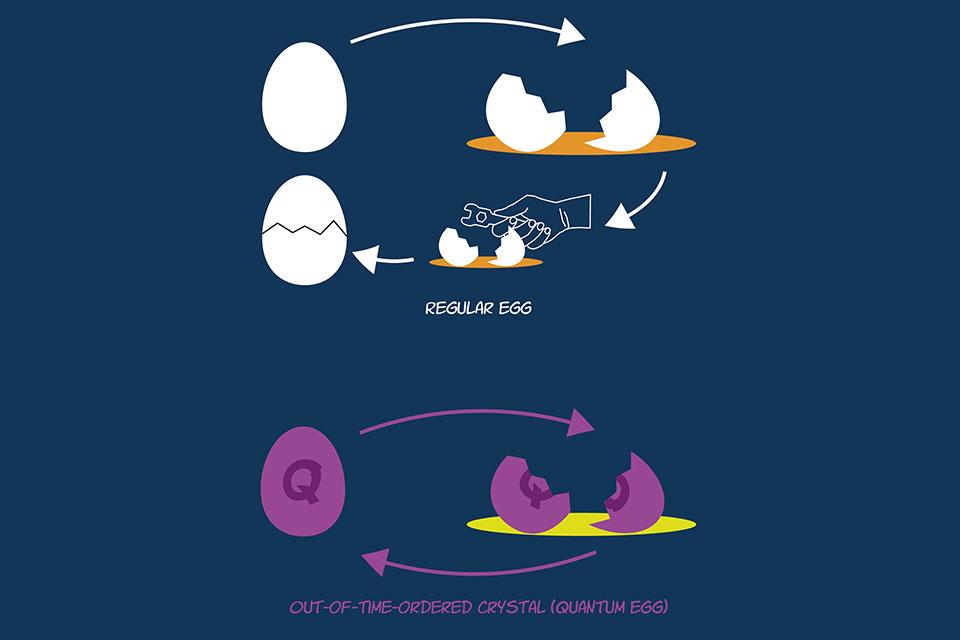Dr Berislav Buca is a postdoctoral research assistant in Atomic and Laser Physics. His work focuses on the theoretical understanding of out-of-equilibrium many-body quantum systems, especially those that are potentially relevant for future quantum technologies. In a letter published in Physical Review Letters, he claims: an egg can actually unscramble itself – if it is quantum.
The letter proposes realistic quantum systems that are like quantum eggs that unscramble themselves and break again periodically forever.
The arrow of time has been a cornerstone of physics for more than a century implying that physical systems can only spontaneously increase the amount of ‘disorder’ they have. In other words, if we break an egg, it will not spontaneously unscramble. However, on the quantum level the precise details of what is meant by ‘amount of disorder’ become subtle begging the question how and in what sense can a quantum system truly violate the arrow of time.
One standard purely quantum notion of the arrow of time is the aptly named quantum scrambling quantified by a measure called the out-of-time-ordered correlator. So far, systems that display periodic oscillations in time, called time crystals, like crystals that have atoms periodically ordered in space, have been demonstrated only for systems that are externally influenced by an environment. In this letter, it is rigorously proven that large classes of quantum systems can have spontaneous persistent oscillations in their out-of-time-ordered correlators. Hence, the proposed systems are called out-of-time-ordered crystals and they behave like quantum eggs that unscramble by themselves.
Out-of-time-ordered crystals and fragmentation, Berislav Buca, Physical Review Letters, 128, 100601

